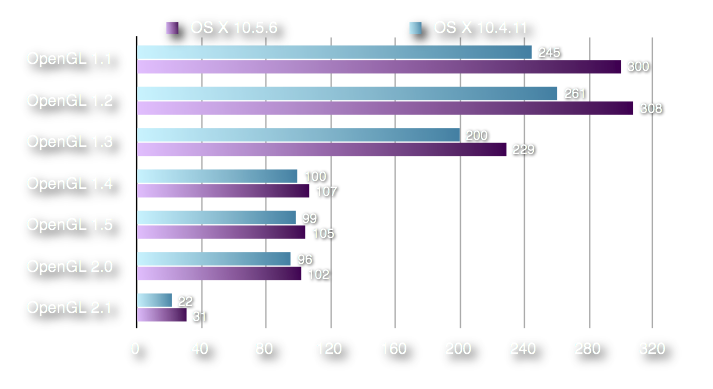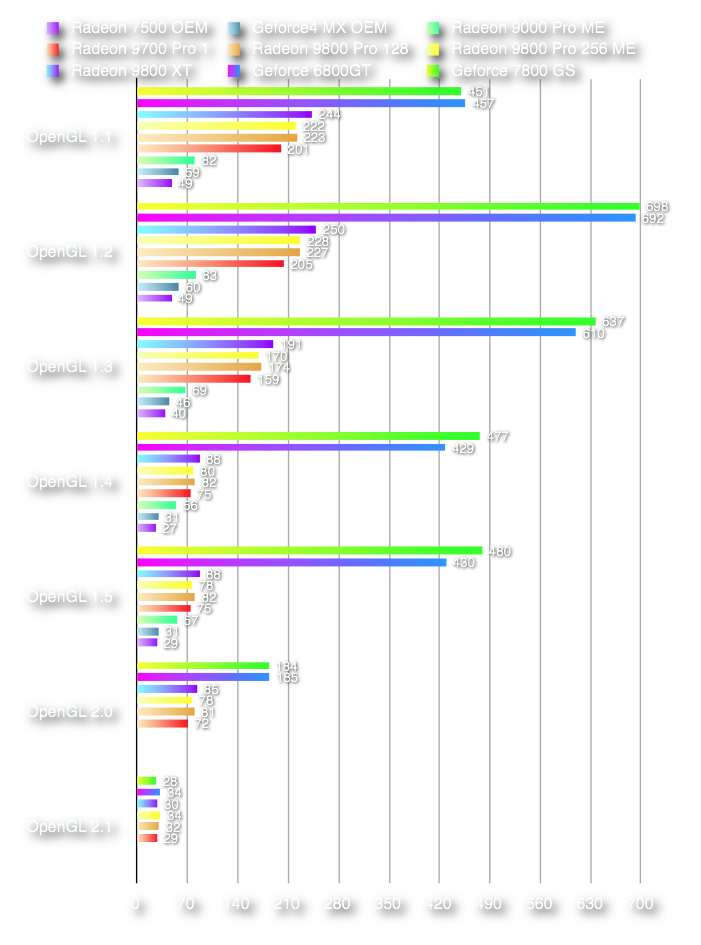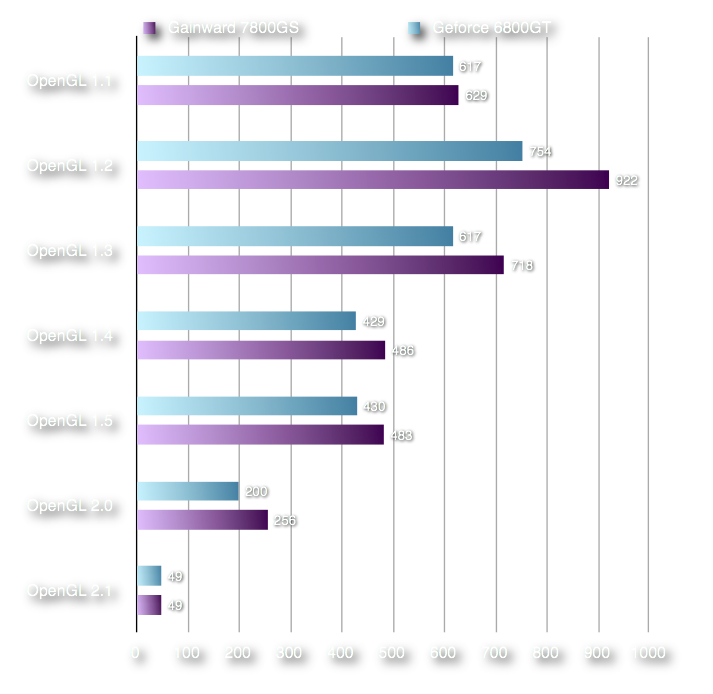







OpenGL Performance
OpenGL is a standard specification for writing and implementing 2D and 3D graphics, and is widely used in video games.
OpenGL is designed to be used as a graphics rendering system only, and integration occurs with OS X and is used in the GUI.
OpenGL is also of importance in the screen rendering and redraw in Photoshop and other software.
OpenGL performance is of importance to overall graphics performance in 2D and 3D applications. OpenGL is implemented in a system through software and hardware, and hardware performance with OpenGL can help determine the correct upgrade depending on ones software needs.
This first batch of testing uses OpenGLViewer from Realtech.vr.
When I started testing, I noted that there is a difference in OpenGL performance between OS X 10.4 and OS X 10.5. OS X 10.5 software seems to allow for fuller utilization of graphics hardware OpenGL capabilities.
Another way to say this, is OpenGL Viewer gives a good picture of a graphics cards performance with the OS drivers at hand, rather than masking results with implementation of OpenGL within a given software.
OpenGL Viewer - 133 MHz G4 4xAGP Graphics - Radeon 9800 Pro 128MB - Test: Benchmark with Fog -
1680x1050 Full Screen - Scores in Frames per Second (fps).

Information provided by OpenGL Viewer tells that OpenGL is more fully supported in OS X Leopard, with all versions 1.2 through 2.1 being 100% supported in the Radeon.
Tiger, on the other hand, supports all OpenGL versions 1.2 through 1.5 100%, with 2.0 and 2.1 being supported 80% and 30% respectively in the Radeon 9800 Pro card.
OpenGL Viewer reports for other cards mirrored the improvement of OpenGL supported versions in OS X 10.5, as compared to earlier OS versions.
The results in the above table appear to be showing the improved implementation of OpenGL and improved OpenGL drivers in OS X 10.5.
Let’s move on to some hardware.
__________________________________________
OpenGL Viewer - 100 MHz bus G4 - OS X 10.5.6 - Test: Benchmark with Fog - 1920x1200 Full Screen
G4 Sawtooth and Gigabit Ethernet 2x AGP Graphics
I’ll get to this eventually.
Though OpenGL in OpenGL Viewer is CPU independent, I want to see how or if a bus speed change would affect the results.....
__________________________________________
OpenGL Viewer - 133 MHz bus G4 - OS X 10.5.6 - Test: Benchmark with Fog - 1920x1200 Full Screen
G4 933 MHz Quicksilver 2002 4x AGP Graphics

It often seems as if OS X doesn’t play fair with regard to driver quality.
Though Geforce cards invariably return higher scores in OpenGL tests, the same isn’t always said, or the difference as apparent, in game play or application function.
The driver saga continues to this day, with the Geforce GTX285 being bettered by a lesser Radeon card in Leopard and Snow Leopard.
As much as I hate to think it, it seems that we are getting burned in not only a lack of graphic card options, but also in the driver department.
It ain’t right......
In the table below, I put a 16 pipeline Geforce 6800 GT up against a 20 pipeline Gainward 7800 GS.
The Gainward shows that it has the OpenGL support that no other card has. Using Openmark, the Gainward went beyond 16 million triangles, which is way beyond (4 million) any other card that I have tested.
OpenGL Viewer - 133 MHz bus G4 - OS X 10.5.6 - Test: Benchmark with Fog - 1920x1200 Full Screen
G4 2.0 GHz Quicksilver 2002 4x AGP Graphics




